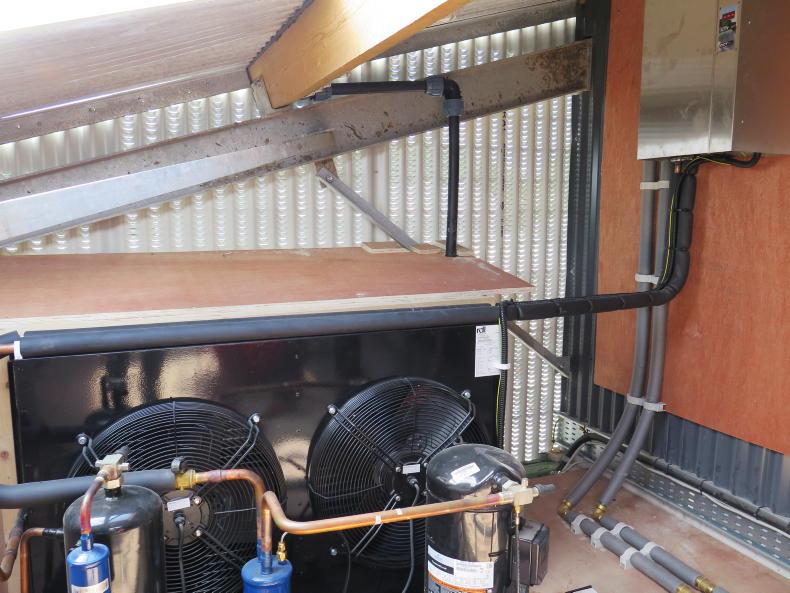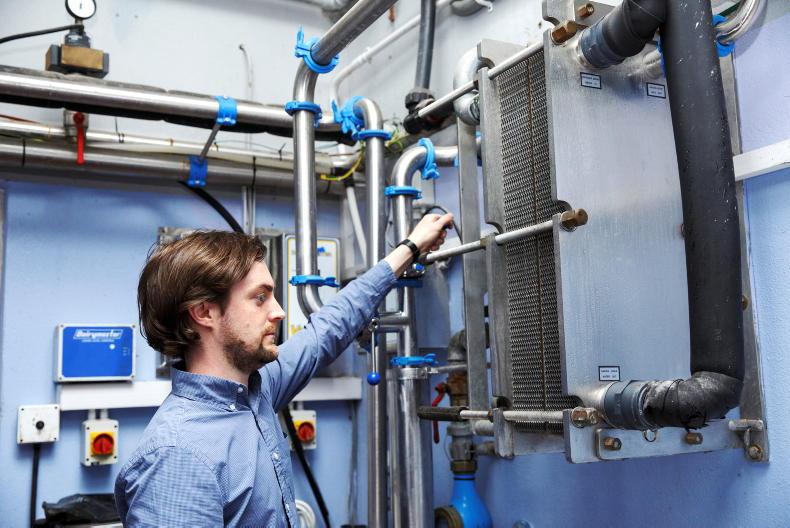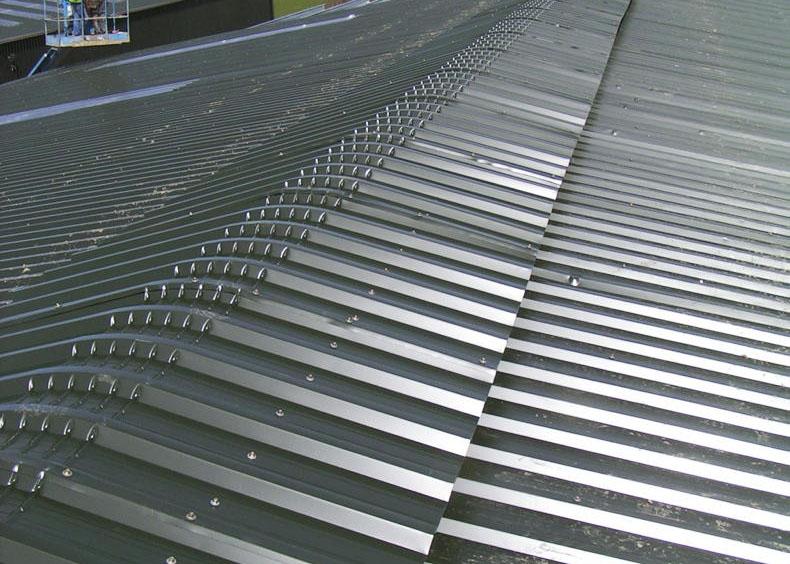According to Teagasc, cooling milk and heating water accounts for 54% of the electricity used on dairy farms. Milk cooling accounts for most of this at 31%, while heating water uses 23% of the total electricity consumption.
In recent years, new technology has been developed to combine milk cooling and water heating into one action, called heat recovery systems. Effectively, these use the heat generated by the process of cooling milk in direct expansion bulk tanks to pre-heat water.
In the absence of a heat recovery unit, the heat generated by the refrigerant in the milk cooling system is evaporated into the atmosphere.
This can be easily recognised - if you stand in front of a bulk tank compressor while it is working, you can feel the warm air coming off the fans.
In a heat recovery unit, rather than letting this heat or energy escape to the air, it is diverted to the heat recovery unit, which heats water to a temperature of between 45°C and 55°C.
This water is then stored and usually used for pre-heating water before it goes into a dedicated water heater. In such cases, the cost of heating water from say 50°C to the required 80°0C to 85°C for plant washing is much less than heating cold water at 12°C (mains temperature) to 80°C or 85°C.
The advantage is that the energy used to heat the water to 50°C is effectively free, apart from the capital cost of installing the heat recovery system.
This is energy that is going to be created anyway, as the milk needs to be chilled from 35°C when it comes out of the cow to 30°C, which is required when it is stored in the bulk tank.
Considerations
However, there are a couple of considerations that should be made when deciding on whether to install a heat recovery system.
The first is the cost. For smaller farms or where hot water washing does not take place daily, the capital cost of the heat recovery unit may be too high, meaning the payback period will be too long.
Secondly, the effectiveness of the heat recovery unit will be decreased when the milk in the bulk tank is pre-cooled, such as by a plate cooler. This reduces the amount of work the bulk tank has to do to cool the milk and so reduces the amount of energy the heat recovery unit can recover.
However, most farmers with a heat recovery unit will continue to use a plate cooler and still provide enough hot water for a daily hot wash and other uses.
Where the bulk tank is cooling milk from 35°C (no plate cooler), the heat recovery unit should be able to heat one litre of water for every litre of milk cooled.
Dairymaster has a dual condensing unit and it also sells a dual tank that heats the water in two stages and means that where a hot wash is carried out once daily, the energy from two milkings will be used to heat the water. Most of the main bulk tank manufacturers also supply their own heat recovery units.
Heat recovery units can be retrofitted to existing bulk tank cooling systems, but advice from Teagasc is to only use a registered and experienced refrigeration installation technician and to get a warranty on the unit.
Retrofitting can work out as an expensive option, as the refrigerant gas may need to be replaced which is costly. For this reason, they are more commonly purchased as part of new installations.
Costs
Cost wise, a heat recovery unit will set you back €5,000 to €8,000 depending on size and specification. A typical unit for a 150-cow herd is around €6,500 including an 800-litre storage tank, all of which can be TAMS-funded.











SHARING OPTIONS